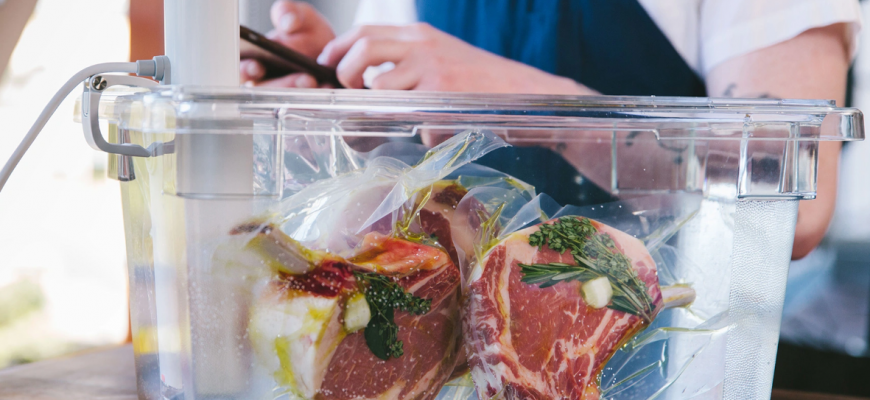Unleash the Power of Sous Vide Cooking!
Sous vide, a French culinary term meaning “under vacuum,” is a revolutionary cooking technique that has transformed the way professional chefs and home cooks approach meal preparation. Known for its precision temperature control and ability to deliver flawless results consistently, sous vide cooking is a game-changer in the kitchen. In this comprehensive guide, we’ll delve into the fundamentals of sous vide cooking, offering detailed tips and advice for mastering this innovative method.
- A Deep Dive into the Sous Vide Process
- Step 1: Assemble Your Sous Vide Arsenal
- Step 2: Preparing Your Ingredients for Sous Vide Cooking
- Step 3: Configuring Your Sous Vide Immersion Circulator
- Step 4: Cooking and Monitoring Your Sous Vide Creations
- Step 5: Finishing Touches for Sous Vide Masterpieces
- Discover the Limitless Potential of Sous Vide Cooking
A Deep Dive into the Sous Vide Process
At its core, sous vide cooking involves sealing food within a vacuum-sealed bag and immersing it in a temperature-controlled water bath. This precise control over temperature ensures that food cooks evenly and retains its natural moisture, resulting in tender, flavorful dishes that boast unparalleled texture. From meats and seafood to vegetables and even desserts, sous vide cooking has the potential to elevate your culinary skills and wow your guests with restaurant-quality results.
Step 1: Assemble Your Sous Vide Arsenal
Before you embark on your sous vide journey, you must gather the necessary equipment:
- Sous vide immersion circulator: This device heats and circulates the water, maintaining a consistent temperature throughout the cooking process.
- Large pot or container: Choose a vessel large enough to accommodate the water bath and the food you plan to cook.
- Vacuum-sealable bags: These bags are designed to withstand the heat of sous vide cooking and ensure an airtight seal.
- Vacuum sealer or resealable plastic bags: A vacuum sealer removes air from the bags, while the water displacement method works well with resealable plastic bags.
- Digital thermometer: This tool is useful for checking the internal temperature of your food, ensuring it has reached the desired level of doneness.
Step 2: Preparing Your Ingredients for Sous Vide Cooking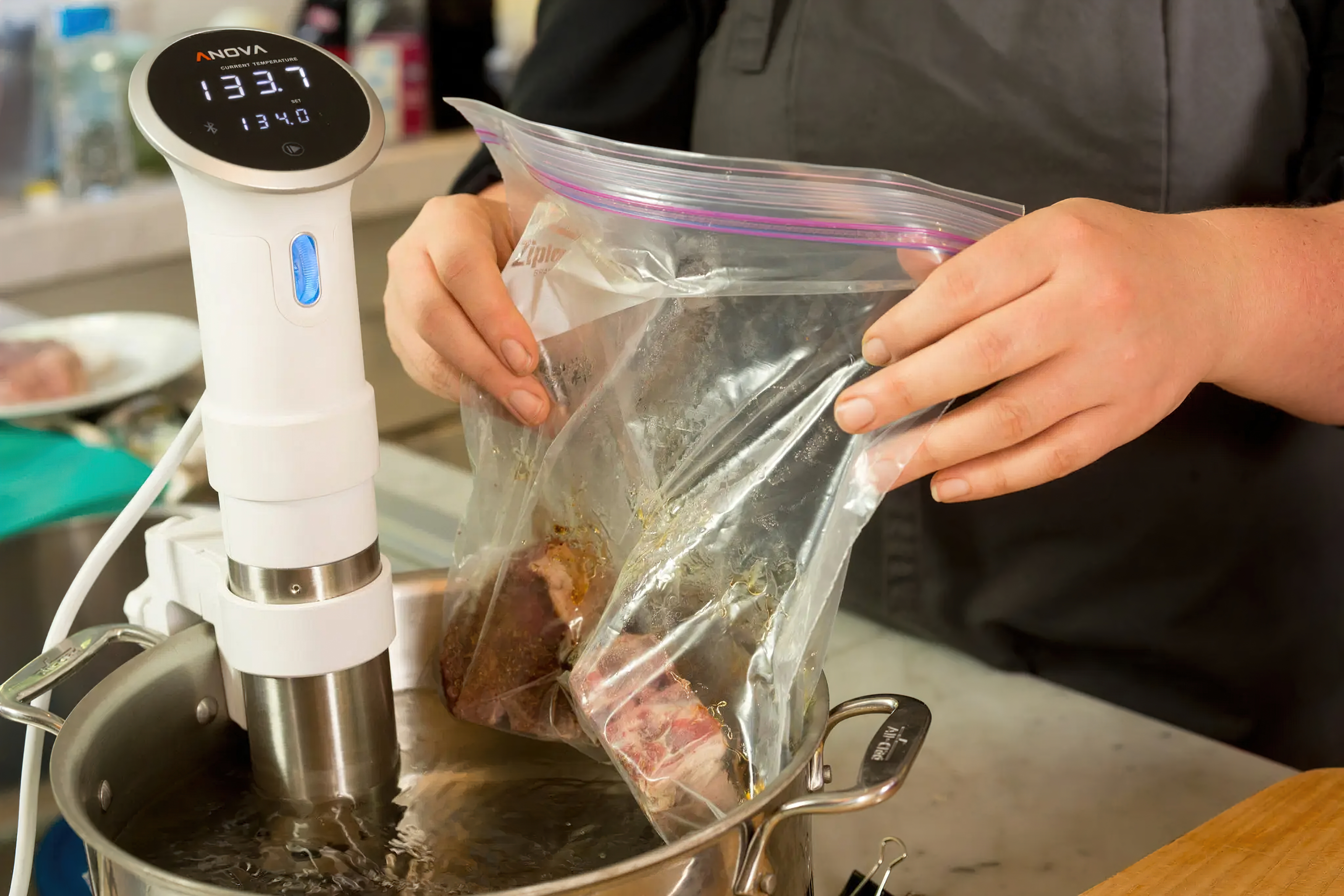
With your equipment in place, it’s time to prepare your ingredients for cooking:
- Seasoning: Season your food according to your taste preferences or recipe instructions. Remember that flavors intensify during sous vide cooking, so a light touch is often best.
- Bagging: Place your seasoned food in the vacuum-sealable bag, taking care to arrange it in a single layer for even cooking.
- Sealing: Use a vacuum sealer to remove air from the bag and create an airtight seal. If using the water displacement method, partially close the resealable bag and slowly submerge it into the water, allowing the pressure to force the air out. Seal the bag once the air has been expelled.
Step 3: Configuring Your Sous Vide Immersion Circulator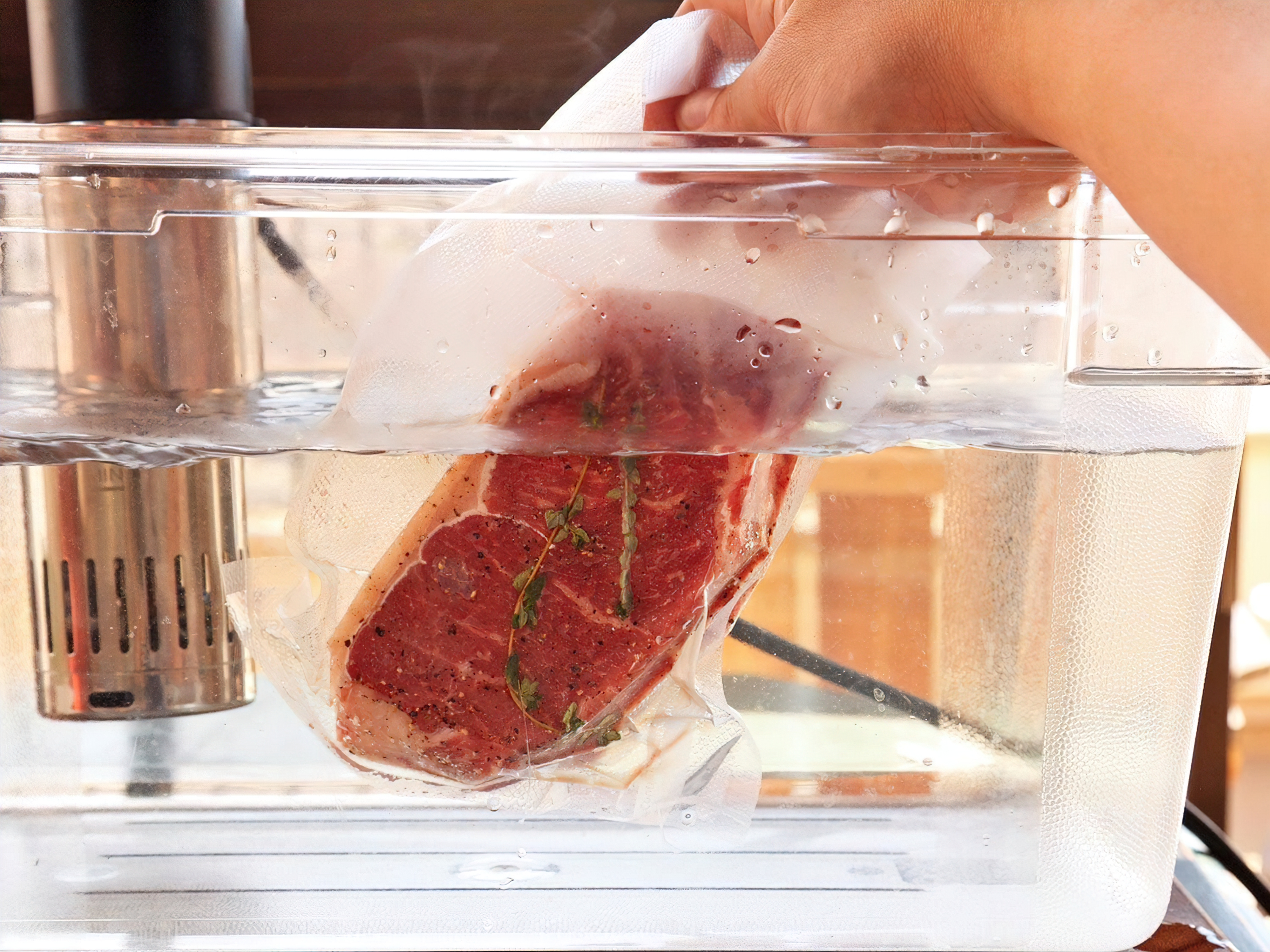
Set up your sous vide cooking station by following these steps:
- Fill your pot or container with water, ensuring there’s enough to cover your vacuum-sealed bags completely.
- Attach the sous vide immersion circulator according to the manufacturer’s guidelines.
- Program the device with the desired temperature and cooking time, which will vary depending on the type of food and your preferred level of doneness. In general, lower temperatures result in tender, medium-rare meats, while higher temperatures yield well-done dishes. Cooking times can range from a few hours to several days, depending on the food’s thickness and desired texture.
Step 4: Cooking and Monitoring Your Sous Vide Creations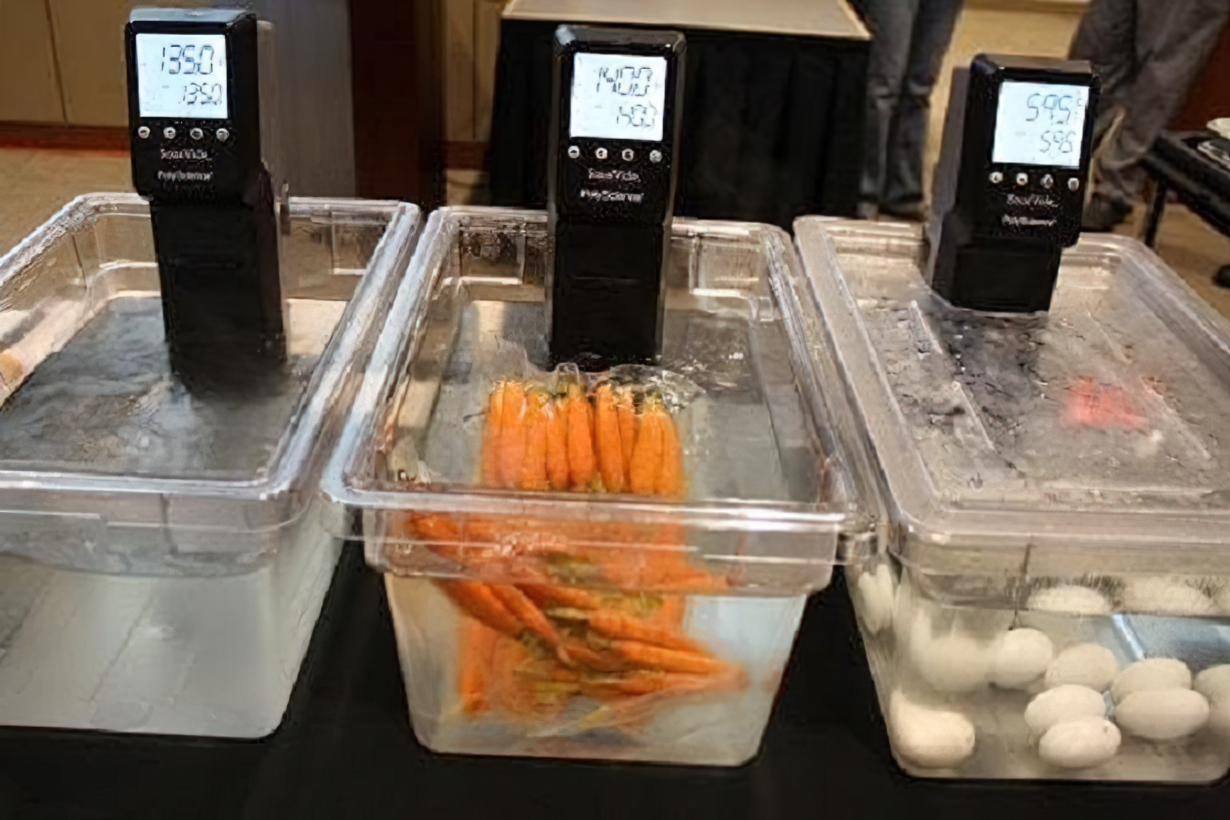
With your immersion circulator set, it’s time to cook:
- Immerse your vacuum-sealed bag in the water bath, ensuring it’s fully submerged and not touching the sides or bottom of the pot, which could cause uneven cooking.
- The immersion circulator will maintain the water temperature, allowing the food to cook uniformly. Keep an eye on the cooking process and adjust the temperature or time settings if necessary.
- Use a digital thermometer to check the internal temperature of your food, particularly when cooking meats, to ensure they’ve reached the appropriate level of doneness.
Step 5: Finishing Touches for Sous Vide Masterpieces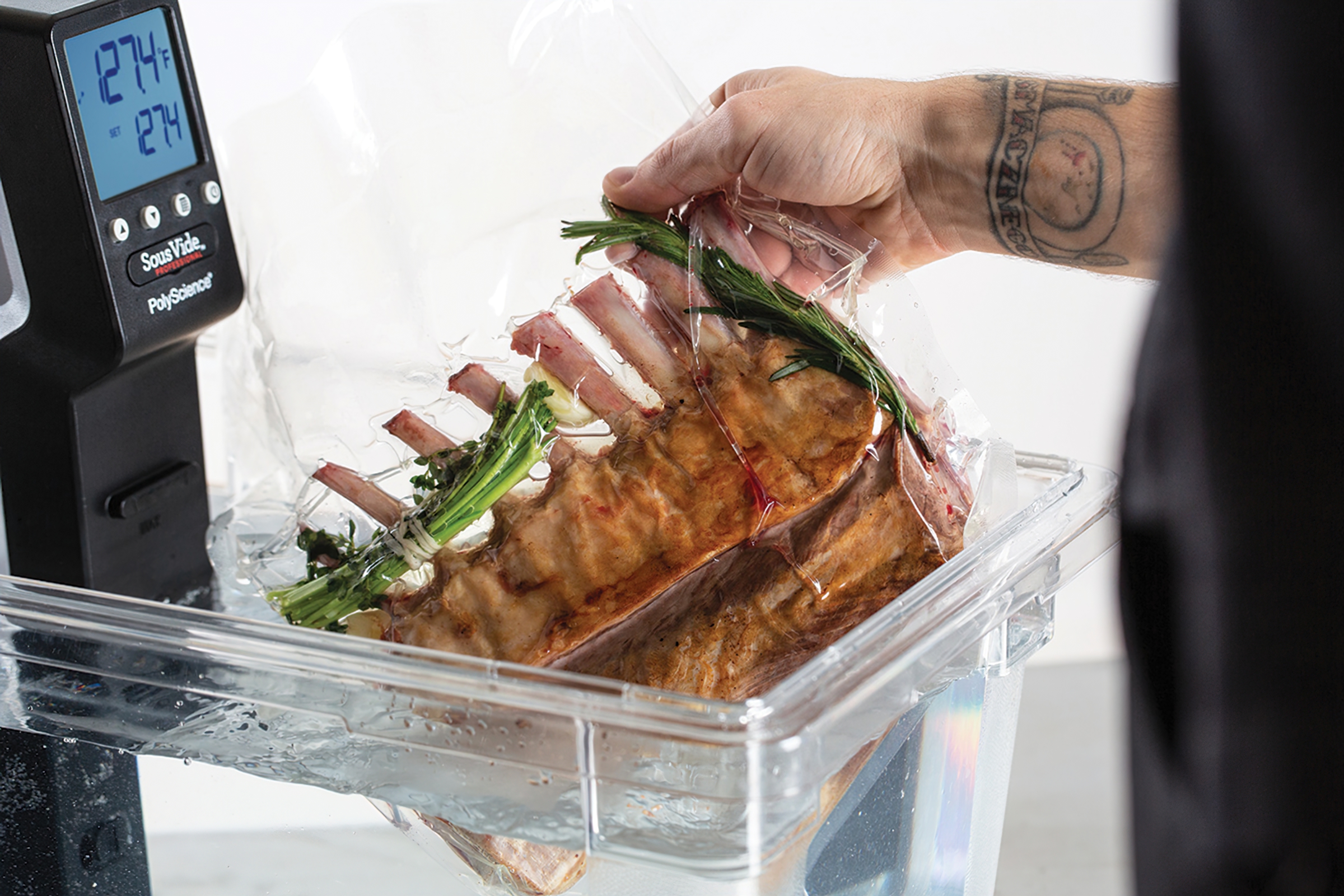
Once your food has cooked to perfection, it’s time to add some finishing touches:
- Remove the vacuum-sealed bags from the water bath and carefully cut them open, being mindful of hot steam and liquid.
- For proteins like meats and seafood, consider searing them on high heat in a skillet or grill for a few minutes to develop a flavorful, caramelized crust. This step adds an appealing visual and textural contrast to the tender sous vide-cooked interior.
- Finish your dish with complementary sauces, garnishes, or accompaniments to elevate the presentation and enhance the overall dining experience.
Discover the Limitless Potential of Sous Vide Cooking
Sous vide cooking is an incredibly versatile technique that can help you achieve exceptional results across a wide range of dishes. By understanding the fundamentals of sous vide and mastering the steps outlined in this guide, you’ll be well on your way to impressing your family, friends, and even yourself with your newfound culinary prowess. So, grab your immersion circulator, gather your ingredients, and start exploring the endless possibilities that sous vide cooking has to offer.
